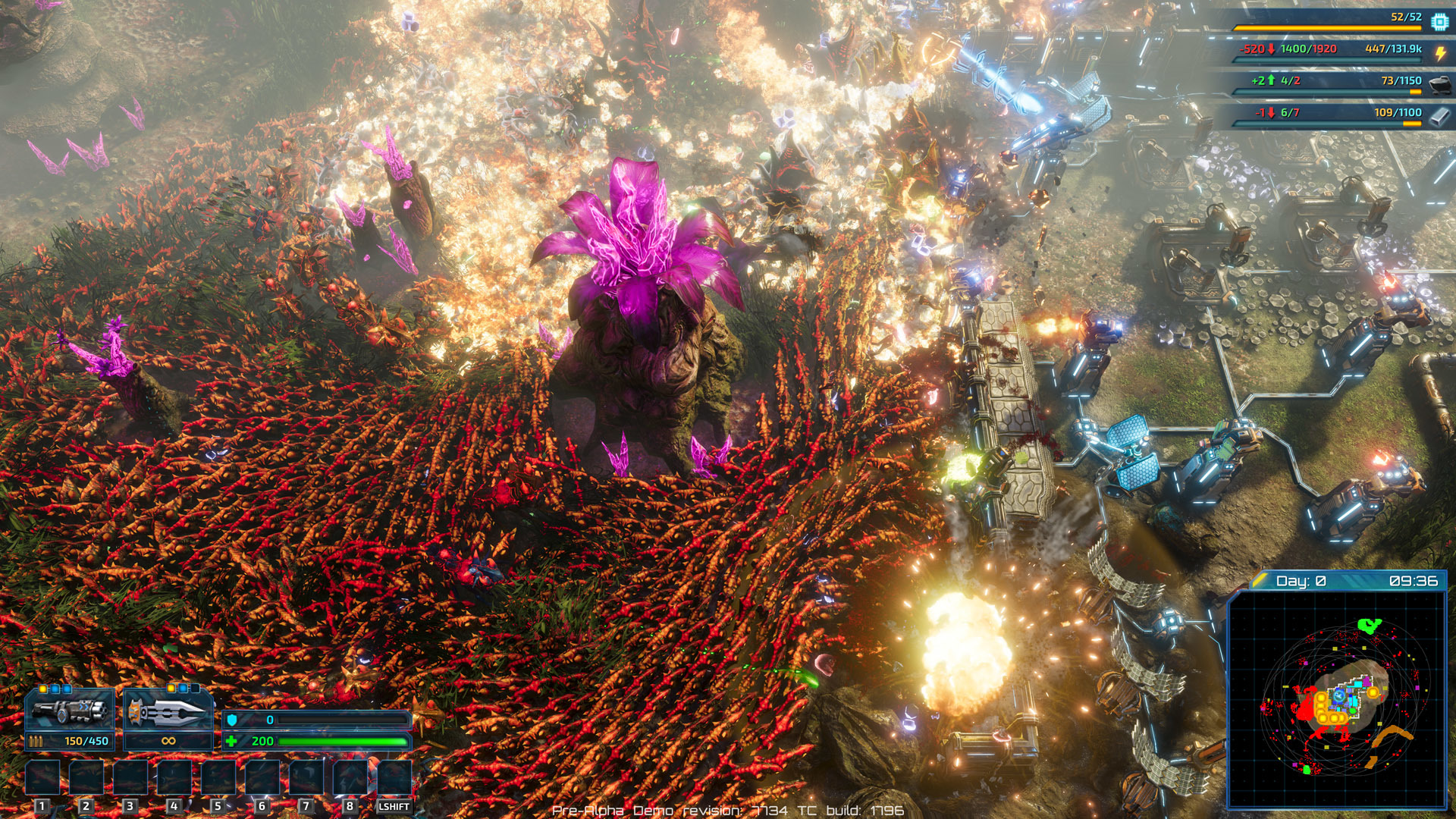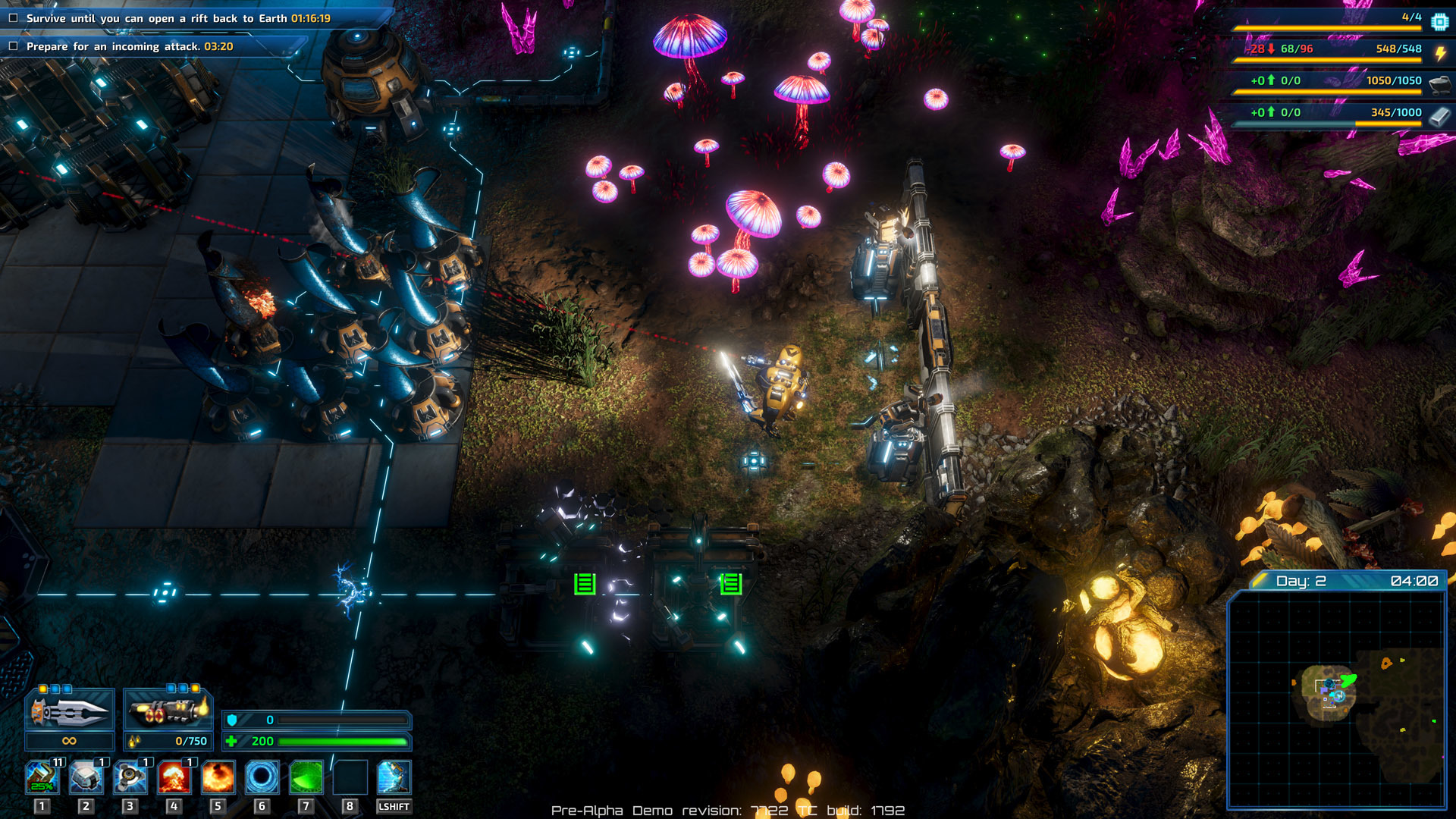How to avoid grind - The Riftbreaker way!
Designing quests for a video game is never easy. In a perfect world, all the tasks you give to the player would be unique and offer completely new experiences. Realistically, however, the designers don’t always have enough time or means to craft such experiences all the time. Sometimes this results in a lot of ‘generic’ missions being given to the player, such as ‘Bring X items to person Y’, or ‘Kill X monsters’. Such filler missions are sometimes necessary, but the mistake some designers make is settling for this type of mission as the bread and butter of their games.

To avoid pointless grind and repetition in The Riftbreaker, we decided to employ a slightly adapted SMART technique. It is a method for setting personal or professional goals that are specific, measurable, achievable, realistic and time-constrained. This technique helps people easily set well-constructed personal goals, such as ‘I’m going to learn 5 new Spanish words this week’. The same method can be also useful in game design. Today we are going to tell you how these principles guide us while preparing the Campaign Mode for The Riftbreaker. Let’s explore this concept, letter by letter.

S for Specific - The instructions for each mission that we give to the player have to be very clear and give them immediate knowledge of what they are expected to do. If we gave you an objective such as ‘Fortify your base’, you wouldn’t be entirely sure what to do and what counts as fortifying the base. The objective itself is not wrong but lacks information. We can fix it by saying, for example, ‘Fortify your base by building 8 Sentinel Towers.’ When we add this info, our expectations are clear, and so is the path to completing the mission.

M for Measurable - The benefit of completing the objective has to be easily measurable for the player. The Riftbreaker is not an old-school RPG game, where sometimes you are forced to collect 70 kilos of cabbage for a random peasant in order to get 100 XP. Every time you do something, you need to feel the purpose of it. Various metrics can be employed to measure the benefit of completing a quest. The rewards don’t always have to be grand to be measurable and noticeable enough. If you fortify your base before an attack comes, your precious buildings are less likely to be destroyed. If you clear out a nest of monsters, they won’t attack you as often.

A for Achievable - Giving the player a mission that is impossible to complete will lead to frustration, and that’s what we have to avoid. Some games have managed to use impossible quests and pulled off great plot twists by doing so (the first fight with Desann in Jedi Outcast - never forget), but it’s a one-trick pony. You can’t base your game on such missions. All objectives in The Riftbreaker will be possible to complete without jumping through impossible hurdles. If we tell you to build something, we will be sure to give you enough resources. If we tell you to kill something, it will be possible to do so.

R for Realistic - Sometimes, even though the mission follows the previous principles, its expectations can be set too high. A mission such as ‘Build 400 Wind Turbines’ (cheers, dualanalogs!) will most likely result in a quick Alt + F4, followed by pressing the ‘uninstall’ button - even if the player has enough resources to complete the objective. The pacing of missions must leave the player satisfied with their progress, and that is achieved by setting realistic goals.

T - for Time-constrained - This one is optional. Some missions benefit greatly by adding a timer into the mix. The sense of urgency when you have just 2 minutes to prepare for a massive attack is immense. However, that is not the only way you can introduce time constraints to your missions. The Riftbreaker features day and night cycle, which allows us to add dynamics to the wildlife. Some species of flora and fauna will only be discoverable at night, while others will come out when the sun comes up. We can give the player a mission to obtain a sample of a nocturnal creature for research. This naturally constrains the win condition to nighttime only.

The SMART method is just a guideline and it is overruled by the most important principle of them all - BREAK THE RULES! Slightly bending the expectations or twisting the rules can be a lot more fun. Game creators have the power to breathe life into new worlds. Why limit your creativity? We always try to lead the players into unexpected and interesting scenarios, and that’s what you can be sure you will find in The Riftbreaker.
Let us know in the comments what kind of missions you would like to see in the game - we’re always open to suggestions. Join our Discord to discuss everything related to EXOR Studios - www.discord.gg/exorstudios
Other social media:
www.facebook.com/exorstudios
www.twitter.com/exorstudios
www.mixer.com/exor_studios
www.twitch.tv/exorstudios
www.youtube.com/exorstudios

To avoid pointless grind and repetition in The Riftbreaker, we decided to employ a slightly adapted SMART technique. It is a method for setting personal or professional goals that are specific, measurable, achievable, realistic and time-constrained. This technique helps people easily set well-constructed personal goals, such as ‘I’m going to learn 5 new Spanish words this week’. The same method can be also useful in game design. Today we are going to tell you how these principles guide us while preparing the Campaign Mode for The Riftbreaker. Let’s explore this concept, letter by letter.

S for Specific - The instructions for each mission that we give to the player have to be very clear and give them immediate knowledge of what they are expected to do. If we gave you an objective such as ‘Fortify your base’, you wouldn’t be entirely sure what to do and what counts as fortifying the base. The objective itself is not wrong but lacks information. We can fix it by saying, for example, ‘Fortify your base by building 8 Sentinel Towers.’ When we add this info, our expectations are clear, and so is the path to completing the mission.

M for Measurable - The benefit of completing the objective has to be easily measurable for the player. The Riftbreaker is not an old-school RPG game, where sometimes you are forced to collect 70 kilos of cabbage for a random peasant in order to get 100 XP. Every time you do something, you need to feel the purpose of it. Various metrics can be employed to measure the benefit of completing a quest. The rewards don’t always have to be grand to be measurable and noticeable enough. If you fortify your base before an attack comes, your precious buildings are less likely to be destroyed. If you clear out a nest of monsters, they won’t attack you as often.

A for Achievable - Giving the player a mission that is impossible to complete will lead to frustration, and that’s what we have to avoid. Some games have managed to use impossible quests and pulled off great plot twists by doing so (the first fight with Desann in Jedi Outcast - never forget), but it’s a one-trick pony. You can’t base your game on such missions. All objectives in The Riftbreaker will be possible to complete without jumping through impossible hurdles. If we tell you to build something, we will be sure to give you enough resources. If we tell you to kill something, it will be possible to do so.

R for Realistic - Sometimes, even though the mission follows the previous principles, its expectations can be set too high. A mission such as ‘Build 400 Wind Turbines’ (cheers, dualanalogs!) will most likely result in a quick Alt + F4, followed by pressing the ‘uninstall’ button - even if the player has enough resources to complete the objective. The pacing of missions must leave the player satisfied with their progress, and that is achieved by setting realistic goals.

T - for Time-constrained - This one is optional. Some missions benefit greatly by adding a timer into the mix. The sense of urgency when you have just 2 minutes to prepare for a massive attack is immense. However, that is not the only way you can introduce time constraints to your missions. The Riftbreaker features day and night cycle, which allows us to add dynamics to the wildlife. Some species of flora and fauna will only be discoverable at night, while others will come out when the sun comes up. We can give the player a mission to obtain a sample of a nocturnal creature for research. This naturally constrains the win condition to nighttime only.

The SMART method is just a guideline and it is overruled by the most important principle of them all - BREAK THE RULES! Slightly bending the expectations or twisting the rules can be a lot more fun. Game creators have the power to breathe life into new worlds. Why limit your creativity? We always try to lead the players into unexpected and interesting scenarios, and that’s what you can be sure you will find in The Riftbreaker.
Let us know in the comments what kind of missions you would like to see in the game - we’re always open to suggestions. Join our Discord to discuss everything related to EXOR Studios - www.discord.gg/exorstudios
Other social media:
www.facebook.com/exorstudios
www.twitter.com/exorstudios
www.mixer.com/exor_studios
www.twitch.tv/exorstudios
www.youtube.com/exorstudios



 Complete view of the mission flow for our survival mission.
Complete view of the mission flow for our survival mission.


 There are about 6000 creatures packed up in those blocks!
There are about 6000 creatures packed up in those blocks!